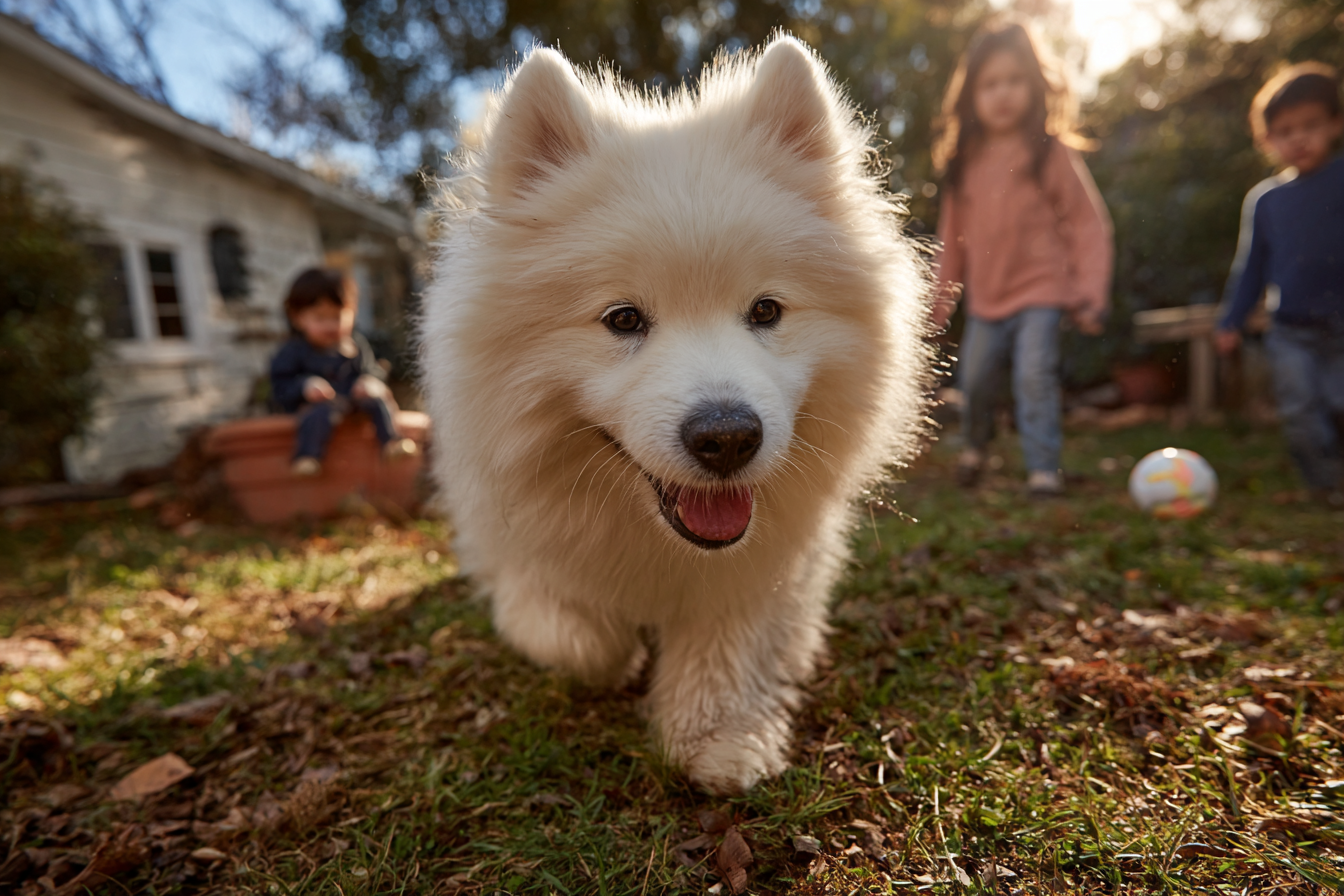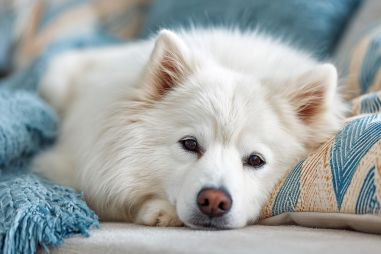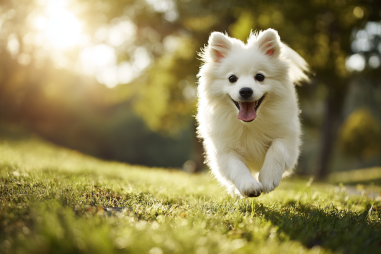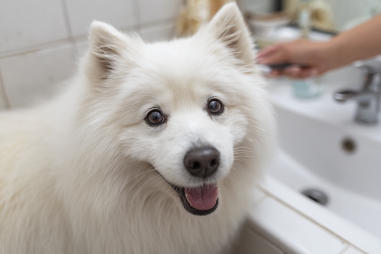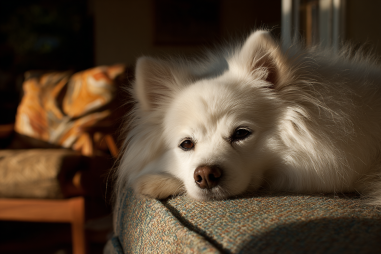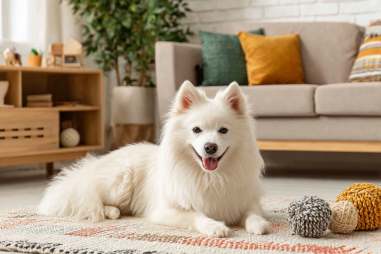When bringing an American Eskimo Dog into a family with children, understanding their behavior and how to nurture a positive relationship is essential. Known for their intelligence, playful nature, and loyalty, American Eskimo Dogs can make wonderful companions for kids. However, like any breed, their interactions with children depend largely on proper training, socialization, and supervision. This article explores what to expect from American Eskimo Dog behavior with children and offers practical guidance to ensure harmony in the household.
Typical Temperament Around Kids
The American Eskimo Dog is often described as affectionate, friendly, and alert, traits that can make them great playmates and protectors for children. These dogs are naturally sociable and tend to enjoy being part of family activities, including those involving younger family members. Their intelligence and responsiveness also make them quick learners, which helps when teaching them how to behave around children. However, their protective instincts mean they can be cautious around strangers and may sometimes be wary of unfamiliar children, especially if not socialized well.
Generally, American Eskimo Dogs display patience with children and enjoy interactive play. They have a medium energy level, which aligns well with the activity levels often exhibited by kids, making them suitable for families looking for a lively yet manageable breed. Their affectionate demeanor means they thrive on companionship, which often translates to strong bonds with children in the family.
Supervision and Safety Tips
Despite their friendly nature, supervision is crucial when American Eskimo Dogs interact with children, especially younger ones. No matter how well-behaved the dog is, unsupervised interactions can sometimes lead to misunderstandings or accidents. Here are important supervision and safety tips to keep in mind:
- Always supervise playtime: Never leave small children alone with the dog to prevent unintentional rough handling or over-excitement.
- Observe body language: Learn to recognize signs of stress or discomfort in your dog, such as growling, lip licking, or avoidance, and intervene accordingly.
- Create safe zones: Provide a quiet space where the dog can retreat when feeling overwhelmed or tired, teaching children to respect this boundary.
- Establish rules: Set clear boundaries about how and when the dog should be approached or played with, enforcing gentle handling at all times.
Teaching Children to Respect Dogs
One of the most important factors in fostering a positive relationship between American Eskimo Dogs and children is teaching kids how to respectfully interact with their canine companions. Children need to understand that a dog is a living being with feelings and needs, not just a toy. Here’s how to encourage respectful behavior:
- Explain appropriate touch: Show children how to pet the dog gently and avoid pulling ears, tail, or fur.
- Teach when to approach: Help kids understand that they should only approach the dog when it seems relaxed and to avoid disturbing it when it is eating or resting.
- Model calm behavior: Encourage children to use a calm tone and slow movements around the dog to avoid startling or exciting it unnecessarily.
- Use role-playing: Practice common scenarios with children to demonstrate how to behave in various situations with the dog.
Encouraging Positive Play
Positive play helps strengthen the bond between American Eskimo Dogs and children while also providing mental and physical exercise for the dog. Because this breed is intelligent and energetic, they benefit greatly from interactive play sessions that engage their minds and bodies. Some ideas for encouraging positive play include:
- Fetch and retrieval games: These dogs often love to chase and retrieve toys, which can be a fun activity for children to initiate.
- Training sessions: Turning obedience practice into a game can be enjoyable for children and helps reinforce good behavior.
- Puzzle toys: Introducing toys that require problem-solving keeps the dog’s brain stimulated and provides a constructive outlet.
- Gentle tug-of-war: With clear rules, tug-of-war can be a fun way for kids to interact with the dog, as long as it’s controlled to prevent aggression or overexcitement.
Managing Energetic Behavior
American Eskimo Dogs are lively and agile, often displaying bursts of high energy that need to be managed to maintain harmony with children. Without sufficient exercise, they may become restless or develop undesirable behaviors such as excessive barking or nipping. Managing their energy effectively involves:
- Regular exercise: Daily walks, play sessions, and mental stimulation are vital to keeping the dog balanced and happy.
- Structured routines: Keeping a consistent schedule for activities and rest helps the dog know what to expect, reducing anxiety or hyperactivity.
- Calm-down periods: Teaching the dog to settle with commands like “sit” or “stay” after play helps them learn impulse control.
By managing their energetic tendencies, families can minimize conflicts and ensure that interactions with children remain safe and enjoyable for everyone.
Socializing with Children of All Ages
Socialization is key to helping American Eskimo Dogs feel comfortable around children of all ages, from toddlers to teenagers. Early and ongoing exposure to children helps the dog develop confidence and reduces the likelihood of fear or aggression. Consider the following socialization strategies:
- Introduce gradually: Start by allowing the dog to observe children at a distance before closer interaction occurs.
- Positive reinforcement: Reward the dog for calm and friendly behavior around children with treats and praise.
- Expose to varied environments: Take the dog to places where children may be present, such as parks or family gatherings, to build comfort in different settings.
- Respect developmental differences: Teach the dog and family members to adjust interactions based on the child’s age and behavior patterns.
Addressing Potential Challenges
While American Eskimo Dogs generally get along well with children, certain challenges can arise if training or socialization is lacking. Some potential issues include:
- Overprotectiveness: Their watchdog nature might lead to guarding behavior that can be intimidating or stressful for children if not managed.
- High energy levels: Excess energy can sometimes result in jumping, nipping, or rough play that might scare or harm young children.
- Separation anxiety: This breed is known for bonding closely with family members, including children, which can lead to anxiety when separated.
Addressing these concerns early through professional training, consistent boundaries, and ongoing socialization helps create a balanced environment. If difficulties arise, seeking advice from a qualified dog trainer or behaviorist can be highly beneficial.
Building a Lasting Friendship
The American Eskimo Dog’s affectionate and intelligent nature makes it a wonderful companion for children when given the right guidance. By understanding their temperament, supervising interactions, teaching respect, encouraging positive play, managing energy, and addressing challenges thoughtfully, families can enjoy a loving and safe relationship between their children and this charming breed. With patience and care, an American Eskimo Dog can become a treasured member of the family, bringing joy and loyalty to every stage of childhood.

